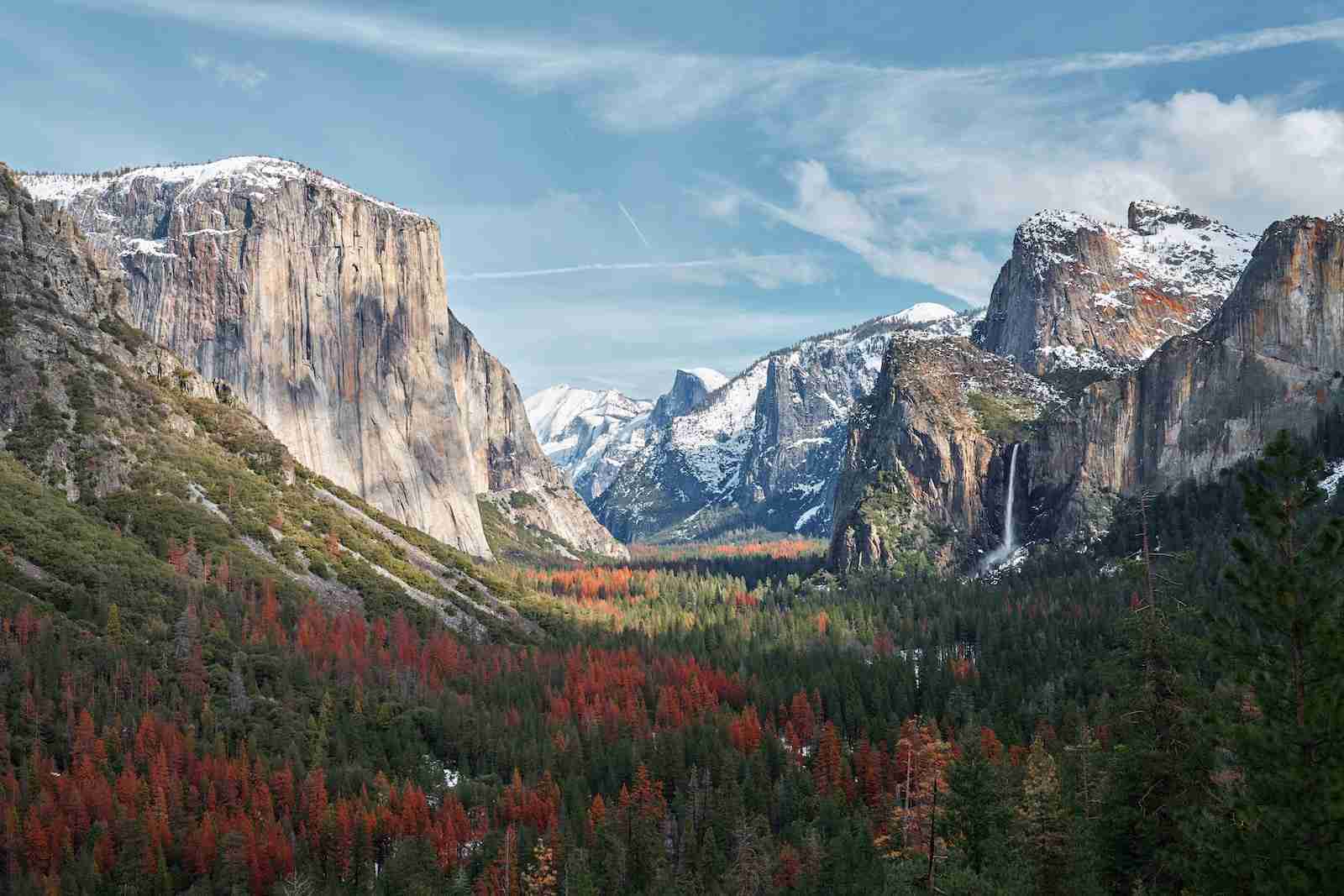22 Fun Facts About Yosemite National Park That You Didn’t Know
1. Yosemite National Park covers an area of over 1,200 square miles, making it larger than the state of Rhode Island.
Yosemite National Park covers an expansive area of 1,200 square miles – in other words, it’s larger than the state of Rhode Island! Its alpine peaks, rugged mountains, millennia-old sequoias and extensive natural beauty have attracted visitors from all over the United States and beyond.
People are mesmerized by its beauty, allowing visitors to experience a diverse range of ecosystems bursting with wildlife. Campers flock here to embark on long treks through valleys alive with thunderous waterfalls.
Additionally, Yosemite National Park offers countless outdoor activities; teaching outdoor enthusiasts rock climbing and backcountry skiing plus introducing them to rafting, kayaking or maybe even mountaineering amongst its peaks!
Ultimately, Yosemite National Park is truly a sight to behold and you’d be hard pushed not immerse yourself wholly in its magnificent expanse from your own very first visit.
2. The park is home to some of the largest living organisms on earth: giant sequoia trees, which can grow up to 300 feet tall and live for over 3,000 years.
The park harbors some of the oldest and tallest living creatures on Earth – giant sequoia trees. These awe inspiring creatures possess a lifespan that may surpass 3 millennia, reaching heights as considerable as 300 feet!
Remarkable by any standards, these living organisms exceed our human capabilities despite having created their own years ago. As a savior to this heritage, the park primes itself as a lasting abode for these graceful monoliths.
3. Yosemite National Park gets its name from the Native American tribe that lived in the area, the Ahwahneechee.
Yosemite National Park, known internationally for its glorious waterfalls and majestic mountain range, did not get its name in the typical sense.
It owes its unique name to an indigenous people who used to inhabit the area long before Europeans arrived to settle here: The Ahwahneechee tribe! This ancient tribe of Native Americans has lent it’s very own tribal name–Yosemite–to this national park as a tribute to it.
Yosemite National Park truly stands as a reminder of traditional culture from the past, still alive and evident in the land that seems constantly clothed in change.4. The park is home to over 400 species of wildlife, including black bears, mountain lions, and coyotes.
4. The park is home to over 400 species of wildlife, including black bears, mountain lions, and coyotes.
Deep within the park lies an abundance of various wildlife. Uncover a rich biodiversity of over 400 species, from the majestic black bear to sly coyotes. Make sure also to keep your eyes peeled for America’s large cat, the mountain lion.
Within the same space is another thriving ecosystem of trees, flowers and streams. Whether you take a closer look into this park or immerse yourself subtly in the nature around you, come explore the plethora of life that awaits those lucky enough to find it!
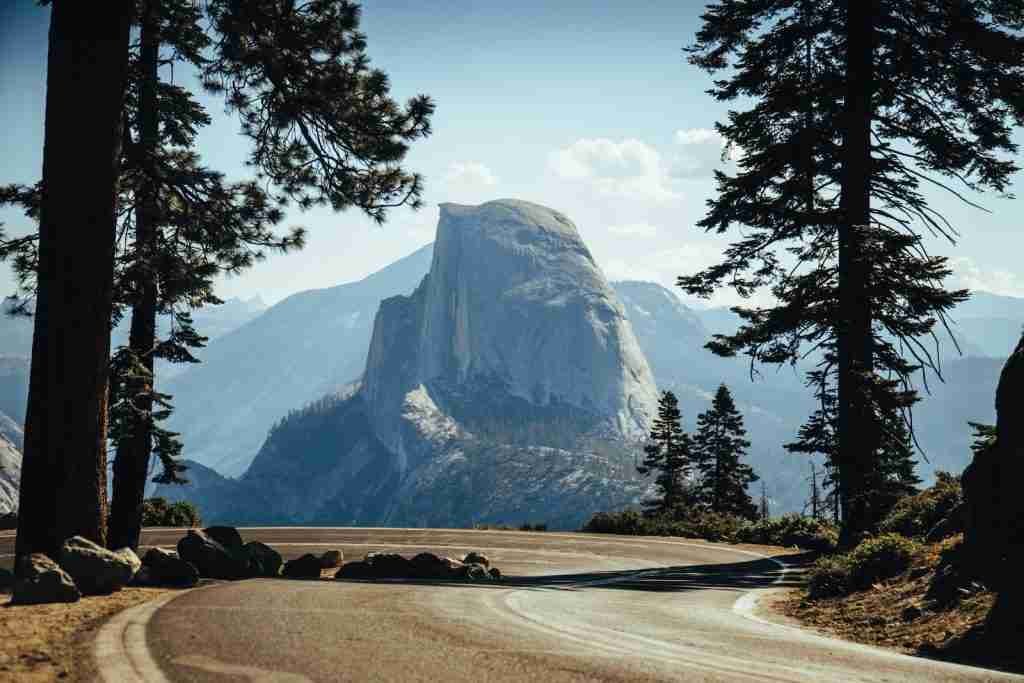
5. Yosemite was the first land in the US set aside for public use and preservation by Congress, in 1864.
In 1864, Congress made history by becoming the first to set aside land with the purpose of both public use and preservation. This landmark decision designated Yosemite as America’s first protected land.
It marked a monumental shift in thinking regarding conservation and responsible forestry management, profoundly influencing our modern day concept of ecology and sustainability.
By visionary foresight, Congress began the long process that would eventually grant parks across the country status as guardians of nature, free from quarrying or human exploitation.
Consequently, Yosemite rustles with the esteemed legacy of being the heartbeat of natural preservation endeavors affirmed over 150 years ago.
6. Ansel Adams, one of the most famous American photographers, took many of his iconic photos in Yosemite National Park.
Ansel Adams is widely recognized as one of the most renowned American photographers of all time. He captured some of today’s most iconic photos in the beautiful Yosemite National Park.
By inquisitively studying nature, framed by scenographic lighting, he managed to freeze moments that reveal the raw power and sublime beauty of America’s West in unique ways.
Adams worked diligently against formidable mountain peaks which created stunning contrasts between vibrant wilderness and pitch black obstructions, producing works of art so powerful, it demanded attention from all across North America.
7. The park has more than 750 miles of hiking trails, ranging from easy walks to strenuous backcountry treks.
A stroll or an intense hike, both are good options for explorers at the park. It boasts over 750 miles of winding trails. An adventurous trekker can select from a plethora of easy and challenging routes.
From moderately easy walks to vigorous backcountry treks, this area provides visitors with a wide range of choices. In essence, it has something for everyone’s taste.
8. The Ahwahnee Hotel, a historic hotel in the park, was used as a filming location for the 1990s movie The Shining.
Nestled among picturesque meadows, postcard lakes and sprawling cowboy towns of California’s Yosemite National Park stands a magnificent National Historic Landmark: Ahwahnee Hotel. Established in the 1920s, this majestic hotel has been a point of pride for folks throughout the area.
So naturally, when director Stanley Kubrick was looking for filming locations to shoot his adaption of Stephen King’s 1977 classic novel, “The Shining,” he chose the very hotel that is uniquely sprawling and impressive inside and out.
As such, from May 1978 to October 1979, using interior spaces and one incredible terrace shot of Bo Hopkins special twoand–a-half long journey to shed an evil as he races off John Deer-style on a 1947 rear engine Cub Tractor–all highlighted The Ahwahnee stunning vistas on 35 mm film.
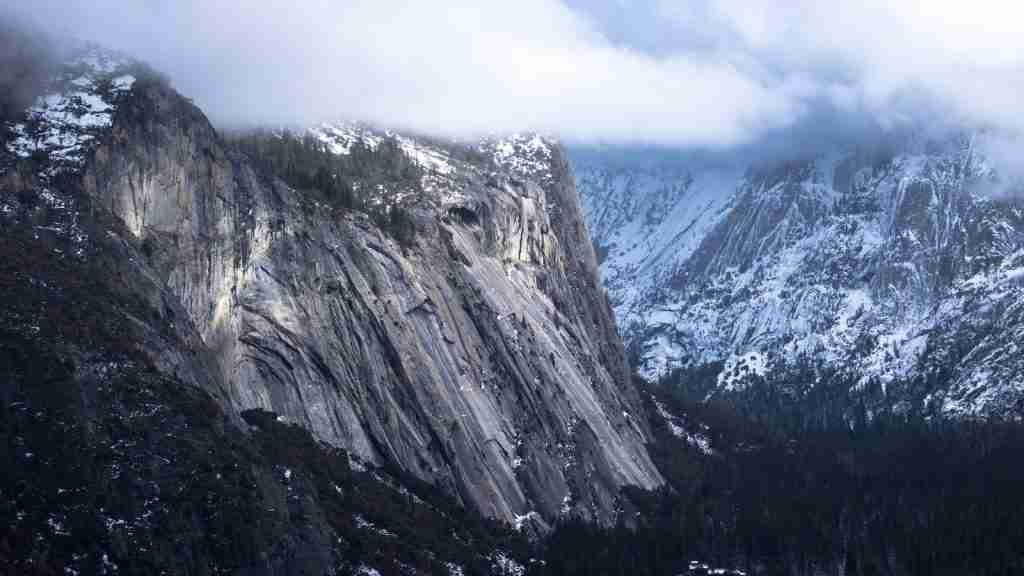
9. Yosemite has a large population of mule deer, which can often be seen grazing in meadows or alongside the park’s roads.
Yosemite is brimming with wildlife, including ample mule deer. These alert, lively creatures can often be spotted innocently grazing in grassy meadows throughout the park.
The deer have no reservations about wandering close to the roads either – visitors can observe them frolicking in nature first hand!
10. The park is known for its spectacular granite cliffs and rock formations, including El Capitan, Half Dome, and Cathedral Peak, which attract climbers from all over the world.
The park is renowned for its striking granite cliffs and edifices, which attract climbers of all levels. Among them are world famous landmarks such as El Capitan, Half Dome, and Cathedral Peak.
These majestic outcroppings have a long history of climbing sport and outdoors adventuring making it an international praiseworthy spot. Hikers traverse from humdrum city life all the way to these magnificently jutted behemoths, seeking milestones involving their family or friends.
There may not be another lightening bolt creation that has generated more journeys of shared spiritual moments than these glorious natural formations.
11. Yosemite National Park was once home to the Southern Sierra Miwok people, who lived in the area for thousands of years before the arrival of European settlers.
Yosemite National Park was once home to a group of Native Americans known as the Southern Sierra Miwok people. For thousands of years, these indigenous people inhabited the valley, crafting luxuries and necessities from materials found in the environment surrounding them.
They held spiritual ceremonies that their descendants observe still today and carefully preserved artifacts along stony mountain paths. Until recently, the landscape along Yosemite Valley hid unassuming clues to their ancient civilization; however, with the arrival of European settlers in the 1800s this lifestyle slowly came to an end.
12. The highest point in Yosemite National Park is Mount Lyell, which stands at 13,114 feet tall.
Mount Lyell is the largest peak in Yosemite National Park towering in at 13,114 feet. An unparalleled abundance of granitic rock forms this mountain’s spectacular landscape. Lyell casts a majestic presence as its apex reaches beautiful new heights towards the sky.
An impressive summit awaits all those brave enough to scale its steep rocky surface for an unforgettable view! Not only does it make for a great adventure, but it also rewards climbers with panoramic perspectives on the surrounding ecology.
13. The park has over 800 miles of streams and rivers, including the Merced River, which runs through the heart of the valley.
The park hosts 800 miles of streams and rivers, an expansive network flowing alongside Yosemite’s majestic landscapes.
At the center of it all: the powerful Merced River. Roaring through the valley like a silver streak cutting through a postcard image, it serves as a natural waterway linking beauty across numerous subregions of the national park.
One moment you’re strolling lush meadows along the Tenaya Creek; the next, rafting past cascading cataracts on Whitewater Creek. The Merced is always nearby, evoking reminders of diverse wonders found only in Yosemite National Park.
14. Yosemite Valley, the park’s most famous landmark, was formed by glaciers over millions of years.
Yosemite Valley is an iconic landmark of the park, and the remarkable landscape was crafted by glaciers over a span of millions of years. The immense glaciers carved dramatic granite cliffs, sculpted impressive waterfalls, and produced vast freshwater meadows that draw visitors from all around.
This stunning valley has become synonymous with Yosemite National Park and left many people in awe of its beauty. The power and fortitude of nature created a grand masterpiece for us to explore, appreciate and make long lasting memories with in the breathtaking Yosemite Valley.
15. The park’s diverse habitats include alpine meadows, giant sequoia groves, and oak woodlands.
At this park, you can find a range of distinctive habitats. Sagebrush meadows with grand gigantea sequoia trees provide a serene atmosphere, while lush oak woodlands abound with dewdrops and bird song.
Marvel in the peaceful beauty of these alpine meadows set high in nature’s paradise!
16. The Yosemite Conservancy offers a wide variety of educational programs and events, including stargazing tours and guided hikes.
The Yosemite Conservancy provides extraordinary learning experiences for all. From stargazing tours to guided hikes, a range of educational programs and events are made available.
Nature lovers rejoice with the special array of opportunities waiting to be explored– uncover the captivating world at Yosemite through specialized field trips, outdoor education workshops and more!
Stargazing tours provide an amazing view of our night sky transformed after sunset while guided hikes note fun stories and tremendous views around the national park.
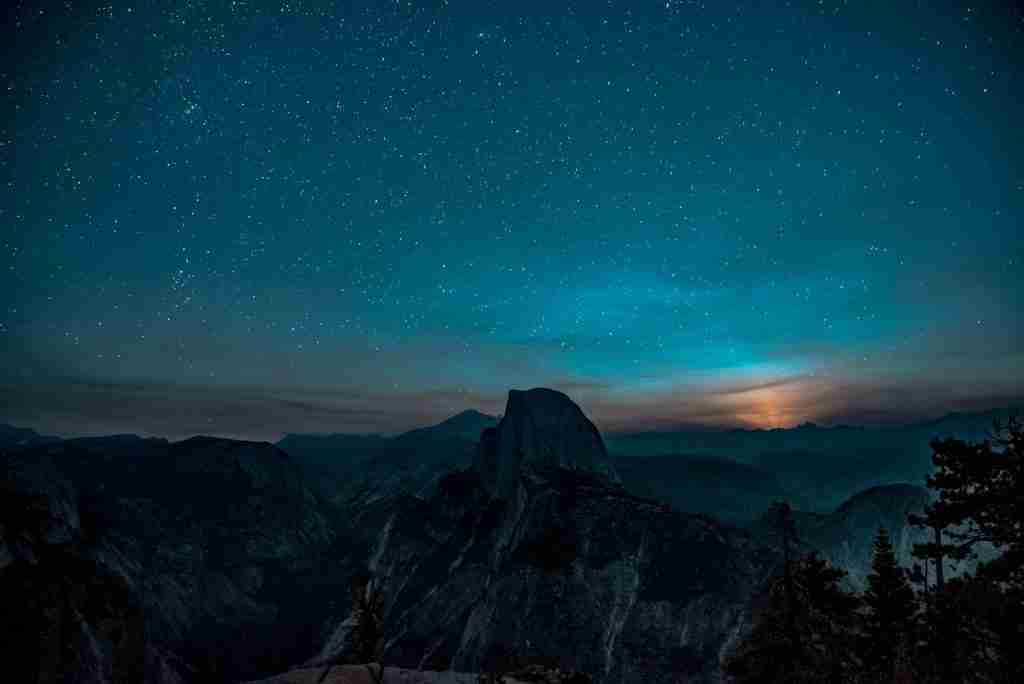
17. The Wawona Hotel, located in the park, was once owned by Galen Clark, who played a key role in the preservation of Yosemite.
Galen Clark was an incredibly important figure in the preservation of Yosemite. He left his mark by purchasing the Wawona Hotel located within the park. But this wasn’t his only contribution – Galen Clark also founded Mariposa Grove, a grove containing some of the world’s largest Sequoia trees.
His travels through California as a naturalist allowed him to observe and document different species of plants and animals that lived within Yosemite Valley. In addition to this, he spearheaded movements which resulted in large sections of Yosemite intended for protection from human contact, which lead to its today’s highest recognition: National Park status.
His achievements directly contributed towards preserving our majestic parks for generations to come and making us wonder of its beauty and diversity endlessly.
18. Yosemite National Park has been designated a UNESCO World Heritage site, recognized for its natural beauty and ecological importance.
Yosemite National Park’s grandiose and awe-inspiring beauty has landed it a designation as a UNESCO World Heritage site! This symbolic recognition acknowledges its unparalleled landscape for the unique ecological advice and original resources.
It is widely acclaimed for its jaw dropping views of world famous landmarks, from Half Dome to El Capitan. These staggeringly immense icebergs of granite have made Yosemite National Park a staple landmark that attracts outdoors enthusiast from every corner of the globe.
The priceless land forms, wildlife, waterfalls and ponderosa forests are seen thousands of miles away by avid visitors looking to enrich their outdoor experience.
19. Yosemite National Park receives an average of 4 million visitors each year
Yosemite National Park’ s popularity is growing yearly, attracting 4 million visitors annually. This stunning corner of nature is host to thousands of species of plants and animals, along with breathtaking waterfalls, mountains and trails for the avid hiker.
So it’s no surprise that people flock to Yosemite every year in search of serenity and adventure. Its rolling hills, vibrant wildflower meadows, impressive half domes, corridors where hunting Jurassic giants used a millions years ago; truly it’s a magical place like no other.
Yosemite invites you to have your national park adventure this summer and create memories you will never forget!
20. Yosemite Falls, located in the park, is one of the tallest waterfalls in the world, with a total height of 2,425 feet.
Yosemite Falls is an impressive natural wonder worldwide. Established in Yosemite National Park, the falls have earned a place among Earth’s tallest waterfalls.
Measuring 2,425 feet in height, Yosemite Falls continues to captivate visitors of all ages with poignant beauty and splendiferous scenes painting throughout the park.
It has been visited countless times by trained and certified professionals hoping to validate its magnitude and resounding presence along the Yosemite landscape – an iconic presence encompassing immense power, curiosity and esteem.
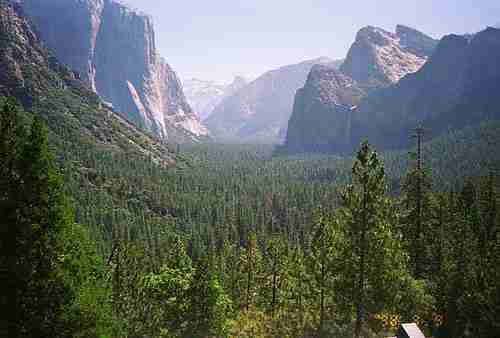
21. Yosemite National Park is the 5th largest national park in the United States.
Yosemite National Park is truly a sight to behold! Sprawling over nearly 750,000 acres, this national park is the fifth largest in all of the United States. It offers its visitors amazing landscapes including majestic waterfalls, striking mountain peaks, massive meadows filled with wildflowers, and secret mountain hideaways.
There are no other places like it, boasting unparalleled beauty and inspiring experiences full of diverse ecosystems and creatures that dwell around them. Yosemite National Park should be next on your list of places to visit if you’re looking for adventures steeped in tranquility and astounded by amazing sights.
22. Tuolumne Meadows is a high-elevation meadow located in Yosemite’s eastern region that offers stunning views of nearby mountain peaks such as Mt. Dana and Mt Lyell.
Tuolumne Meadows stands proudly at an impressive and majestic elevation amidst Yosemite’s eastern region. Here, you can admire stunning views of impressive mountain peaks such as Mt. Dana and Mt Lyell for miles around.
Whether it be early in the day with a crisp morning air or basking in the evening twilight, experience glorious and breathtaking sunsets amongst some of nature’s finest work. Recent excursions to this special place have been known to inspire those lucky enough to visit—it is truly something not to be missed!

